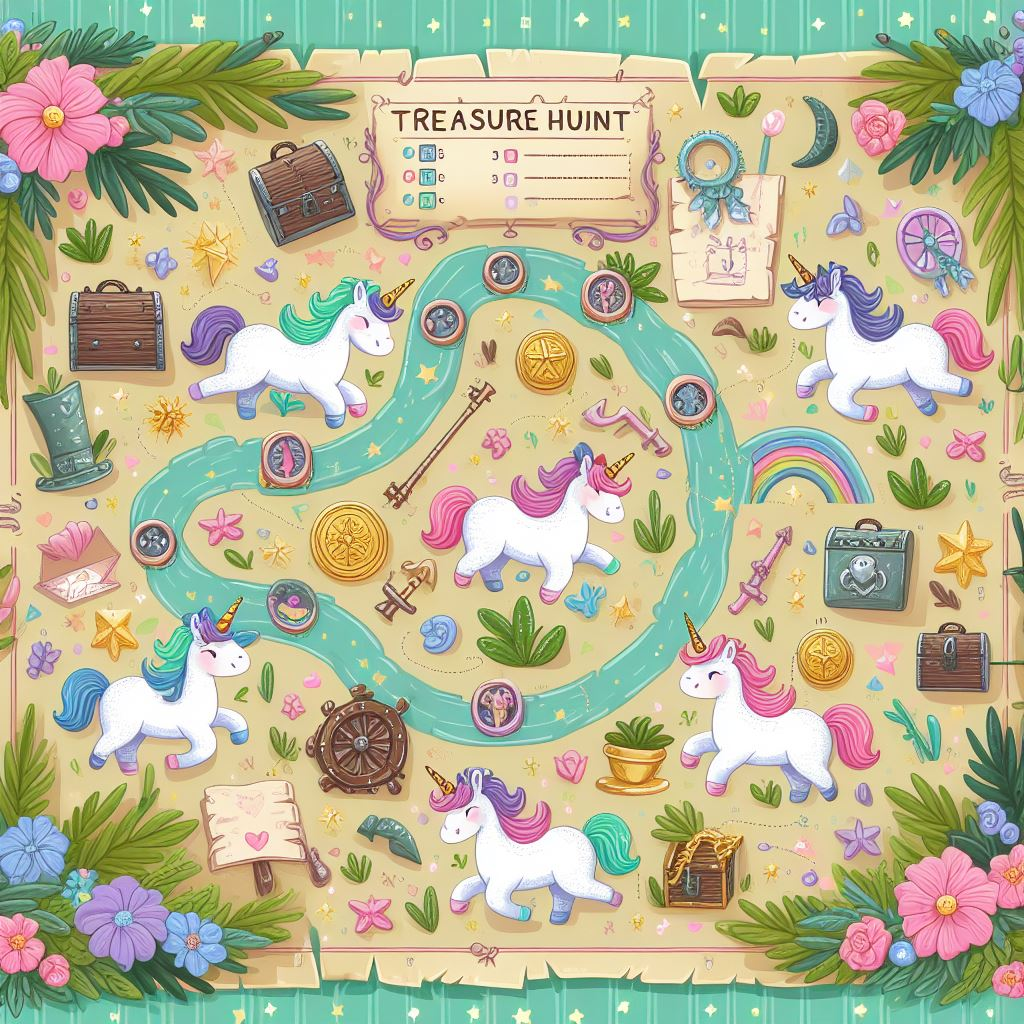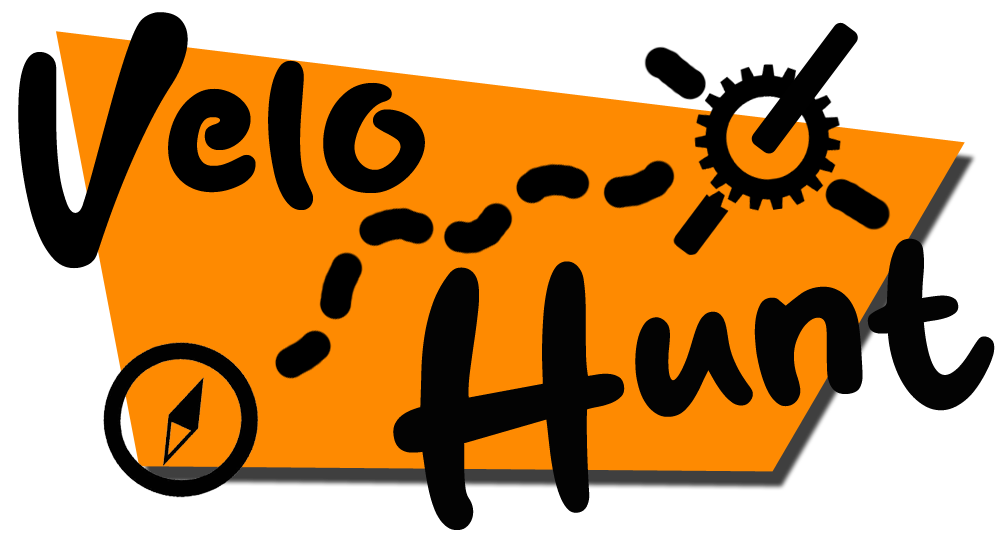At Velo Hunt we love creating fun and engaging scavenger hunts for everyone. It's a type of activity that always seems to bring back childhood memories of exploring, they're also a fantastic tool for building skills and knowledge. Velo Hunt scavenger hunts are set as a challenge to encourage riders to explorer new roads and trails. We also encourage them to push their skills at route planning and researching.
We have various techniques and tricks for building our hunts, these work perfectly for any type of scavenger hunt. These techniques can help to inspire imagination and also focus planning to suit the right ability level for players taking up your challenge. In this article you will find our 5 steps for creating a good scavenger hunt, along with useful knowledge about what makes scavenger hunts so great.
What is a Scavenger Hunt?
Scavenger hunts are one of the oldest games created by parents to help keep their children entertained. The objective of the game is for a player to find a set amount of items in a specific location. Sometimes clues and maps are involved to make the game even more interactive and challenging for the competitors.
One of the earliest forms of a scavenger based game was called ‘letterboxing’. It started in the 1800’s and involved hiding treasure boxes in public areas with clues and maps to find them. One of the latest forms of scavenger hunts is Geocaching, this uses modern GPS data locating with smart phone apps to provide the search clues when finding hidden items.
Traditional scavenger hunts can be created for players of all ages and abilities, they can work with hundreds of competitors or just a solo explorer. It’s also easy to set the ability level and length depending on the scavenging area and items to find. The game can also be set as a competition or even as a team building activity.

Benefits of a Scavenger Hunt
Scavenger hunts can be run anywhere and be used as a perfect learning tool to encourage hunters to explore and find new things. Here are some other key benefits to scavenger hunts;
-
Improve Problem-Solving Skills: Clue based scavenger hunts usually have a lot of problems to solve. Navigating tricky outdoor terrains can also require solving problems in order to progress onwards and continue searching.
-
Builds Teamwork and Social Skills: Most scavenger hunts are used as team building exercises and involve a lot of idea sharing, to try and solve the game clues. It can also require the sharing of knowledge when trying to find items in unfamiliar locations.
-
A Great Physical Activity: Walking is a excellent source of exercise. With the adventure of hunting for hidden items, this usually encourages children to excitedly run as they search locations.
-
Encourages Observation and Discovery: Kids learn to observe their surroundings closely, often discovering new things in familiar places.
-
Teaches Good Orienteering skills: Even without a map, navigating areas and locations is a handy skill to have. It is also a skill best learned through experience. With the addition of a map, this adds another dimension to the adventure and the skills being learned.
-
Helps Relieve Stress: Not usually an issue for children, but most physical activities are proven to help relieve stress.
-
A Base For Great Learning Opportunities: A scavenger hunt can be used to guide learning of a particular subject. This can be achieved from the location or the clues and items used in the hunt.
5 Steps to Creating a Great Scavenger Hunt
Here are 5 key steps for getting the foundations right for a scavenger hunt. We follow these steps when creating our Velo Hunts each month.
 Plan how long the scavenger hunt needs to be
Plan how long the scavenger hunt needs to be
The timed length of a scavenger hunt should be determined by the age of the players taking part. The typical attention span for a child under 10 years old is around 30 minutes. For anyone over 16, a good mental and physical challenge should last around an hour. The search area for a scavenger hunt is always important in working out how long it will last.
If it is an outdoor location, it is always best to time how long it would take to cover this area. From there you can multiply that duration by how many items are being searched from to get a rough idea how long the hunt will take.
It’s also a good idea to do a quick risk assessment of the area, especially if you have a lot of excited children in a rush to search for treasure.

Plan a Good Theme that Relates to the Scavenger Hunt Players
 A key to creating a good scavenger hunt is the use of imagination for the items and clues. A way of encouraging this imagination is by setting a theme for the hunt. This may seem like it’s going to limit options for clues and items by trying to make them relate to a common theme, however we have found that a focused theme improves imagination and unlocks better ideas for the hunt.
A key to creating a good scavenger hunt is the use of imagination for the items and clues. A way of encouraging this imagination is by setting a theme for the hunt. This may seem like it’s going to limit options for clues and items by trying to make them relate to a common theme, however we have found that a focused theme improves imagination and unlocks better ideas for the hunt.
Of course a common theme would be a pirate based treasure hunt, but better themes would be tailored to the children participating in the hunt. These would be themes like popular TV shows, movies or computer games. You could even use specific toys such as Hot Wheels or Barbie as the theme.
From having a specific theme it also helps when searching for ideas for clues or images.
Choosing the Best Game Type for Your Scavenger Hunt
As scavenger hunts can have a variety of rules to suit the individuals and location, the next area you want to work on is the type of hunt you are going to plan. We would start with the amount of children taking part in the hunt and decide on one of the following types:
Team – If you have a lot of children then this will probably be your best option. A mass competition of children against each other will never end well. But working together will add team building skills to the challenge and create a better atmosphere.
Individual Challenge - We would always suggest promoting tasks like this as a challenge instead of a competition. This removes some pressure and stress of failure and allows successful scavenge hunters to share there experience and help others who are also taking on the challenge.
Competition - This type of hunt is best if there are fixed location items so that specific clues can be used to help competitors. If you have nature items like wild animals and insects that move around then it will add a lot of stress to the competition.
Planning What Type of Scavenger Hunt Items to Use
There are two main types of items to have in a scavenger hunt; Fixed and Chance Items.
Fixed Items
These are items that have been purposely hidden by you the organiser. These type of items are usually accompanied by clues or hints to help guide the players in finding them.
Tips for Hiding Fixed Scavenger Hunt Items
-
If you are hiding items for children, remember their view point will be lower than yours.
-
If you are wanting to make the items easier to find, try attaching a common marker to each of them. This can be something like a printed number or letter. If you want them to be even easier, use some florescent tape.
-
To protect clues from the elements you can place them in plastic sealable food bags.
-
If you are creating clues for the hunt, it sometimes helps to plan your clues backwards.
Chance Items
Chance Items are items you (the organiser) have not hidden for the players. These will be common items specific to the location the hunt is taking place in. Examples of this could be items like signs, vehicles or Wildlife, etc.
Tips for Chance Scavenger Hunt Items
-
With these type of items, pre-planning of the area is always advised. Walking around the hunt area a few times will allow you to create a list of items that could be searched for.
-
If you are giving different items to each player/team, then categorise your items with how difficult they're likely to be. From there you can evenly sort them into groups to make it fair for everyone.
-
Double check that none of the items are seasonal and potentially not available at the time of the scavenger hunt.
Planning Scavenger Hunt Clues for Fixed/Set Location Items
If you are planning a scavenger hunt with fixed/set items then it's likely you are going to provide some clues to help the players. Here are some tips and ideas for creating your scavenger hunt clues.
-
Traditional - The most common type of scavenger hunt clue is one where you partially describe the item or it's location without stating it directly. You could describe the items shape, colour, texture or some other item it is near to.
-
Pictures - Images are always a great way of providing clues to a hidden item. There is a vast source of images available on the internet which include detailed images, cliparts and now AI computer generated images. Most search engines have an image specific search available to help you find the perfect clue. If you want to make things a little harder you can use a free editing tool to blur out key features of the image like text or signs, etc.
-
Riddles - These clues can take a little more time but are great fun if you can master them. For basic ones you can simply describe a feature of that item or maybe a nickname for it. For more cryptic riddles you can always use a search engine and for a riddle where the answer is the name of the item.
-
Anagrams - These can be easier to create than riddle clues but are generally harder to solve. A variation of this is to simply blank out some letters of the clue names, the players then try to fill in the missing letters to reveal the clue.
-
Emojis - chat/phone emoji icons are very popular and a great way of making novel clues. Most items can be found in the emoji catalog. You can also have some fun with them by making basic directions from each emoji.
We hope this article has been helpful and informative. We also hope you have great fun making your own scavenger hunt. If you have any questions of scavenger hunt techniques we use here at VeloHunt, please feel free to contact us. Happy Hunting.
|






 VeloHunt Steve
VeloHunt Steve